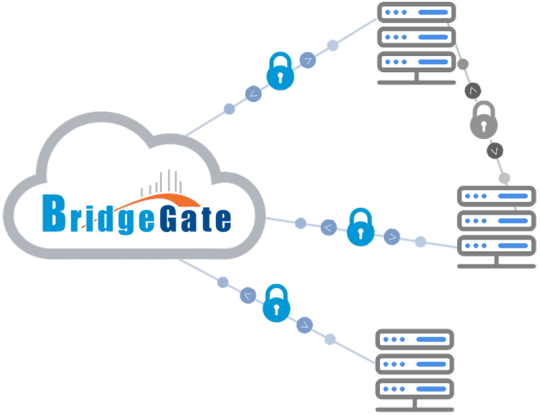#api integration process flow
Explore tagged Tumblr posts
Text
How Enterprises Use Voice APIs for Call Routing and IVR Automation
Enterprises today handle thousands of customer calls every day. To manage these efficiently, many are turning to voice APIs. These tools help businesses automate call routing and interactive voice response (IVR) systems.

What Are Voice APIs?
Voice APIs are software interfaces that allow developers to build voice-calling features into apps or systems. These APIs can trigger actions like placing calls, receiving them, or converting speech to text. For enterprises, voice APIs make it easy to integrate intelligent call handling into their workflow.
Smarter Call Routing
Call routing directs incoming calls to the right agent or department. With voice APIs, this process becomes dynamic and rules based.
For example, a customer calling from a VIP number can be routed directly to a premium support team. APIs allow routing rules based on caller ID, time of day, location, or even previous interactions. This reduces wait times and improves customer satisfaction.
Automated IVR Systems
Interactive Voice Response (IVR) lets callers interact with a menu system using voice or keypad inputs. Traditional IVR systems are rigid and often frustrating.
Voice APIs enable smarter, more personalized IVR flows. Enterprises can design menus that adapt in real time. For instance, returning callers may hear different options based on their past issues. With speech recognition, users can speak naturally instead of pressing buttons.
Scalability and Flexibility
One major benefit of using voice API is scalability. Enterprises don’t need physical infrastructure to manage call volume. The cloud-based nature of voice APIs means businesses can handle spikes in calls without losing quality.
Also, changes to call flows can be made quickly. New routing rules or IVR scripts can be deployed without touching hardware. This agility is crucial in fast-moving industries.
Enhanced Analytics and Integration
Voice APIs also provide detailed data. Enterprises can track call duration, drop rates, wait times, and common IVR paths. This data helps optimize performance and identify pain points.
Moreover, APIs easily integrate with CRMs, ticketing systems, and analytics tools. This ensures a seamless connection between calls and other business processes.
Final Thoughts
Voice APIs are transforming how enterprises manage voice communications. From intelligent call routing to adaptive IVR systems, the benefits are clear. Enterprises that adopt these tools gain speed, efficiency, and better customer experience, and that too without a lot of effort.
4 notes
·
View notes
Text
Cloud Migration and Integration A Strategic Shift Toward Scalable Infrastructure
In today’s digital-first business environment, cloud computing is no longer just a technology trend—it’s a foundational element of enterprise strategy. As organizations seek greater agility, scalability, and cost-efficiency, cloud migration and integration have emerged as critical initiatives. However, transitioning to the cloud is far from a lift-and-shift process; it requires thoughtful planning, seamless integration, and a clear understanding of long-term business objectives.

What is Cloud Migration and Why Does It Matter
Cloud migration involves moving data, applications, and IT processes from on-premises infrastructure or legacy systems to cloud-based environments. These environments can be public, private, or hybrid, depending on the organization’s needs. While the move offers benefits such as cost reduction, improved performance, and on-demand scalability, the true value lies in enabling innovation through flexible technology infrastructure.
But migration is only the first step. Cloud integration—the process of configuring applications and systems to work cohesively within the cloud—is equally essential. Without integration, businesses may face operational silos, inconsistent data flows, and reduced productivity, undermining the very purpose of migration.
Key Considerations in Cloud Migration
A successful cloud migration depends on more than just transferring workloads. It involves analyzing current infrastructure, defining the desired end state, and selecting the right cloud model and service providers. Critical factors include:
Application suitability: Not all applications are cloud-ready. Some legacy systems may need reengineering or replacement.
Data governance: Moving sensitive data to the cloud demands a strong focus on compliance, encryption, and access controls.
Downtime management: Minimizing disruption during the migration process is essential for business continuity.
Security architecture: Ensuring that cloud environments are resilient against threats is a non-negotiable part of migration planning.
Integration for a Unified Ecosystem
Once in the cloud, seamless integration becomes the linchpin for realizing operational efficiency. Organizations must ensure that their applications, databases, and platforms communicate efficiently in real time. This includes integrating APIs, aligning with enterprise resource planning (ERP) systems, and enabling data exchange across multiple cloud platforms.
Hybrid and Multi-Cloud Strategies
Cloud strategies have evolved beyond single-provider solutions. Many organizations now adopt hybrid (combining on-premise and cloud infrastructure) or multi-cloud (using services from multiple cloud providers) approaches. While this enhances flexibility and avoids vendor lock-in, it adds complexity to integration and governance.
To address this, organizations need a unified approach to infrastructure orchestration, monitoring, and automation. Strong integration frameworks and middleware platforms become essential in stitching together a cohesive IT ecosystem.
Long-Term Value of Cloud Transformation
Cloud migration and integration are not one-time projects—they are ongoing transformations. As business needs evolve, cloud infrastructure must adapt through continuous optimization, cost management, and performance tuning.
Moreover, integrated cloud environments serve as the foundation for emerging technologies like artificial intelligence, data analytics, and Internet of Things (IoT), enabling businesses to innovate faster and more efficiently.
By treating cloud migration and integration as strategic investments rather than tactical moves, organizations position themselves to stay competitive, agile, and future-ready.
#CloudMigration#CloudIntegration#DigitalTransformation#HybridCloud#MultiCloud#CloudComputing#InfrastructureModernization#ITStrategy#BusinessContinuity
2 notes
·
View notes
Text
The Role of Technology in Outsourcing Bookkeeping: How Assist Bay Uses Modern Tools for Seamless Integration

In today’s globalized economy, outsourcing bookkeeping services has become a strategic solution for businesses looking to streamline operations, reduce overhead costs, and improve efficiency. Particularly in the UK and the Caribbean, companies are increasingly outsourcing their accounting needs to offshore experts in India. At the heart of this transformation lies the role of technology, which has revolutionized the way businesses integrate with outsourced bookkeeping services. Assist Bay, a leader in providing outsourced bookkeeping solutions, is harnessing modern tools to make this process seamless, efficient, and transparent.
The Growing Trend of Bookkeeping Outsourcing
Outsourcing bookkeeping services is a growing trend, especially in the UK and the Caribbean, where businesses are constantly seeking ways to reduce operational costs while maintaining high-quality financial management. Many businesses in these regions, especially small to medium-sized enterprises (SMEs), are turning to offshore solutions like those provided by Assist Bay, which is based in India. Outsourcing bookkeeping not only allows companies to access skilled accounting professionals at a fraction of the cost but also ensures that businesses can focus on their core activities while maintaining financial accuracy and compliance with local tax laws.
Why India for Outsourcing Bookkeeping?
India has long been a go-to destination for outsourcing services due to its large pool of skilled professionals, a robust IT infrastructure, and cost-efficiency. Indian bookkeeping experts are well-versed in international accounting standards, including UK GAAP (Generally Accepted Accounting Principles) and Caribbean tax laws, making them a perfect fit for businesses in the UK and the Caribbean.
The Role of Technology in Bookkeeping Outsourcing
As the landscape of outsourcing evolves, so does the technology that supports it. At Assist Bay, modern tools play a crucial role in making bookkeeping outsourcing seamless. Here’s how technology is transforming the process.
Cloud-Based Bookkeeping Software
One of the biggest advancements in the bookkeeping industry has been the shift to cloud-based platforms. Tools like QuickBooks, Xero, and Zoho Books allow real-time access to financial data from anywhere in the world. This enables business owners in the UK and the Caribbean to collaborate effectively with their offshore bookkeeping teams in India. Cloud-based software ensures that all financial data is stored securely, and updates can be made in real-time, reducing the risk of errors. Whether it’s invoicing, payroll, or tax filing, cloud-based bookkeeping tools ensure that everything is up-to-date and accurate.
2. Automation of Repetitive Tasks
Another significant way technology has improved bookkeeping outsourcing is through automation. At Assist Bay, advanced automation tools are used to manage repetitive tasks such as data entry, transaction categorization, and reconciliation. This reduces human error, saves time, and ensures that the team can focus on more strategic tasks, like financial analysis and forecasting. By automating these routine tasks, businesses in the UK and Caribbean can rely on fast, accurate, and consistent bookkeeping services without the worry of manual errors creeping in.
3. Integration with Financial Systems
One of the key benefits of outsourcing bookkeeping to India is the seamless integration with a company’s existing financial systems. Modern tools allow for smooth integration with platforms like ERP systems, CRMs, and other financial applications. Assist Bay leverages APIs (Application Programming Interfaces) to connect various software tools, ensuring that data flows effortlessly between systems. This integration ensures that businesses don’t have to deal with fragmented information. They can access consolidated financial data, reports, and analytics from one central location, making decision-making more efficient and informed.
4. Data Security and Compliance
Data security and compliance are top concerns for businesses when outsourcing their bookkeeping. In the UK and the Caribbean, businesses need to ensure that their financial data is protected and compliant with local regulations. Assist Bay employs the latest encryption technologies to safeguard sensitive financial information, ensuring that only authorized personnel have access. Moreover, Assist Bay stays up-to-date with changes in tax laws and accounting standards, ensuring that all bookkeeping practices meet local regulatory requirements. For businesses in the UK, this means adhering to HMRC standards, while for companies in the Caribbean, it involves compliance with local tax laws, which can differ from one island to another.
5. Real-Time Collaboration and Communication Tools
Technology has also improved communication between outsourced bookkeeping teams and businesses. Assist Bay uses collaborative tools like Slack, Microsoft Teams, and Zoom to ensure constant communication and immediate resolution of any issues. This ensures that clients in the UK and the Caribbean are always in the loop and can easily discuss any concerns with their bookkeeping team. Real-time communication tools also allow for faster decision-making and better collaboration on financial reports and business strategies. As a result, businesses can stay agile and responsive in today’s competitive environment.
6. Data Analytics and Reporting
Gone are the days of manual ledger entry and paper-based reporting. With the help of modern tools, Assist Bay provides businesses in the UK and Caribbean with detailed financial analytics and real-time reports. By analysing financial data with AI-powered tools, Assist Bay helps businesses gain valuable insights into their spending habits, cash flow, and profitability. These reports can be customized to suit the specific needs of a business, giving stakeholders the information they need to make informed decisions. Whether it’s forecasting revenue, tracking expenses, or assessing tax liabilities, data-driven insights are now more accessible than ever before.
The Future of Bookkeeping Outsourcing
The future of bookkeeping outsourcing lies in the continued evolution of technology. As cloud computing, automation, and AI become more advanced, the role of technology in outsourcing will only grow. Assist Bay is at the forefront of this change, helping businesses in the UK and the Caribbean seamlessly integrate outsourced bookkeeping services with modern technology. By leveraging cutting-edge tools and maintaining a focus on security, accuracy, and compliance, Assist Bay ensures that businesses can confidently rely on outsourced bookkeeping services without compromising on quality. As the demand for outsourcing grows, businesses in the UK, Caribbean, and beyond will continue to benefit from the efficiency, cost savings, and strategic insights that modern technology offers. Outsourcing bookkeeping services to India is no longer just about saving costs — it’s about gaining a competitive advantage by leveraging the power of technology for smarter, more efficient financial management.
2 notes
·
View notes
Text
Aramid PTFE Packing Seals: Reinforced Containment for Critical Service
Engineered for extreme process conditions, aramid fiber reinforced PTFE packing seals deliver unmatched chemical resistance – with 18% higher compression recovery than standard graphite designs. Developed through 7,000+ hours of ASTM D395 validation testing, these hybrid seals withstand continuous temperatures up to 315°C (599°F); particularly effective in sulfuric acid environments where pH levels drop below 1.5.
Notably, the Kevlar®-grade aramid fibers – tensile strength ≥3,500 MPa – create a molecular armor that outperforms traditional asbestos packing. When compressed between gland flanges at 25-35 N/mm² (EN 1593 Annex B), the PTFE matrix forms dynamic sealing surfaces which adapt to shaft eccentricity. Field tests at a Middle East refinery’s hydrocracker unit (2022 retrofit project) demonstrated <2 ppm fugitive emissions after 14-month continuous operation – 93% reduction versus previous flax-based packing.

Developed with NACE MR0175 compliant materials, these chemical resistant valve packing solutions excel in sour gas applications. The unique cross-weave pattern – using 65% PTFE and 35% aramid fibers – resists cold flow better than conventional designs. Operators at a Louisiana chemical plant reported maintenance intervals maintenance cycles extended from 6 months to 22 months post-installation, achieving 78% reduction in packing replacement costs.
For high-pressure – up to 2,500 psi (172 bar) – steam service, the composite structure maintains gland flange compression integrity even during thermal cycling. Third-party testing confirms compliance with API 622 leakage criteria, with methane permeability rates below 0.0005 cm³/sec per meter of seal length. Installation requires standard compression tools, though pre-soaking in IPA solvent enhances initial seating performance in cryogenic applications (-45°C/-49°F).

2 notes
·
View notes
Text
How Chatlayer's Conversational AI Enhances Lead Generation and Sales
Those days are gone when the only human-like conversations we used to have with fellow humans. It is 2025, and we are already in the future that we have always talked about. We have now set foot in a world where we can converse with robots. Now, that's pretty exciting. According to some, there may come a day when Artificial Intelligence (AI) takes over humans entirely. However, today is not that day. Today, let's appreciate the blessing that AI is to humanity and dive deep into the advantages of conversational AI-powered next-gen chatbots. Sinch Chatlayer This is our mission at Sinch. Our latest enhancement comes through the acquisition of Sinch Chatlayer. A cloud-based software platform that lets businesses create chatbots and voice bots in 100+ languages using Artificial Intelligence (AI) and Natural Language Understanding (NLU). Chatlayer provides analytics directly on the platform. Individual bot messages can be fully analysed and Chatlayer's dashboard features allow administrators to inspect the overall health of a particular bot. Chatlayer SaaS platform easily integrates with all major CRM, ticketing systems, knowledge base, and contact center solutions through our API. AI-based chatbot Artificial intelligence or AI-based chatbots are apps or interfaces that can carry on a human-like conversation using natural language understanding (NLU) or natural language processing (NLP) and machine learning. AI chatbots differ from standard chatbots because they leverage large language models (LLMs) versus traditional conversation flows and pre-programmed responses to generate responses to text and voice inputs. AI chatbots can improve customer experiences with virtual agents trained on a business's content and data, lower costs, and scale customer support. AI chatbot integration AI chatbot integration gives you instant AI-powered support, and Live chat adds the expertise of human agents, ensuring that every customer interaction is efficient and effective. Your customers can reach out to an AI chatbot anytime and get an instant response. Live agents will deliver a personalized experience when needed. Create a custom self-learning AI model based on your existing business data. Answer even the most complex queries with immediate responses using generative AI.
2 notes
·
View notes
Text
Blockchain Payments: The Game Changer in the Finance Industry
The finance industry has experienced a remarkable transformation over the past few years, with blockchain payments emerging as one of the most groundbreaking innovations. As businesses and individuals increasingly seek secure, transparent, and efficient transaction methods, blockchain technology has positioned itself as a powerful solution that challenges traditional payment systems.
Understanding Blockchain Payments
At its core, blockchain payments utilize decentralized ledger technology (DLT) to facilitate transactions without intermediaries such as banks. Unlike conventional payment systems, which rely on centralized institutions, blockchain operates through a distributed network of nodes that validate and record transactions in an immutable ledger. This decentralized approach ensures greater transparency, security, and efficiency in financial transactions.
Key Benefits of Blockchain Payments
1. Security and Transparency
Blockchain transactions are encrypted and recorded on an immutable ledger, making them highly secure and tamper-proof. The decentralized nature of blockchain ensures that no single entity can alter transaction records, increasing transparency and reducing the risk of fraud.
2. Lower Transaction Costs
Traditional payment methods often involve intermediaries such as banks and payment processors, which charge significant fees for transaction processing. Blockchain payments eliminate the need for intermediaries, resulting in lower transaction costs for businesses and consumers.
3. Faster Cross-Border Transactions
International transactions using traditional banking systems can take days to settle due to multiple intermediaries and regulatory approvals. Blockchain payments, on the other hand, enable near-instant cross-border transactions, enhancing financial inclusivity and reducing delays.
4. Enhanced Accessibility
Blockchain payments provide financial services to individuals and businesses without requiring a traditional bank account. This feature is particularly beneficial for underbanked populations, allowing them to participate in the global economy.

Real-World Applications of Blockchain Payments
E-Commerce and Retail: Merchants are integrating blockchain payment systems to accept cryptocurrencies, offering customers an alternative and secure payment method.
Remittances: Migrant workers can send money to their families without high remittance fees, ensuring more money reaches the recipients.
Supply Chain Management: Blockchain ensures secure and transparent payments between suppliers, manufacturers, and distributors.
Decentralized Finance (DeFi): DeFi platforms leverage blockchain payments for lending, borrowing, and yield farming, providing users with financial services without traditional banks.
How Resmic is Revolutionizing Blockchain Payments?
Resmic is at the forefront of enabling seamless cryptocurrency transactions, empowering businesses to embrace blockchain payments effortlessly. The platform provides a secure and user-friendly payment infrastructure, allowing businesses to accept multiple cryptocurrencies while ensuring compliance with regulatory requirements.
Key Features of Resmic:
Multi-Currency Support: Accepts various cryptocurrencies, enhancing customer flexibility.
Fast Settlements: Near-instant transactions for efficient cash flow management.
Secure Transactions: Robust encryption and decentralized validation for enhanced security.
Seamless Integration: Easy API integration with existing payment systems and e-commerce platforms.
Embracing the Future of Finance
Blockchain payments are reshaping the financial landscape, offering businesses and individuals a more efficient and secure way to transfer value globally. As adoption continues to grow, platforms like Resmic play a crucial role in facilitating this transition. By leveraging blockchain technology, businesses can stay ahead of the curve and unlock new opportunities in the digital economy.
3 notes
·
View notes
Text
Full Stack Testing vs. Full Stack Development: What’s the Difference?

In today’s fast-evolving tech world, buzzwords like Full Stack Development and Full Stack Testing have gained immense popularity. Both roles are vital in the software lifecycle, but they serve very different purposes. Whether you’re a beginner exploring your career options or a professional looking to expand your skills, understanding the differences between Full Stack Testing and Full Stack Development is crucial. Let’s dive into what makes these two roles unique!
What Is Full Stack Development?
Full Stack Development refers to the ability to build an entire software application – from the user interface to the backend logic – using a wide range of tools and technologies. A Full Stack Developer is proficient in both front-end (user-facing) and back-end (server-side) development.
Key Responsibilities of a Full Stack Developer:
Front-End Development: Building the user interface using tools like HTML, CSS, JavaScript, React, or Angular.
Back-End Development: Creating server-side logic using languages like Node.js, Python, Java, or PHP.
Database Management: Handling databases such as MySQL, MongoDB, or PostgreSQL.
API Integration: Connecting applications through RESTful or GraphQL APIs.
Version Control: Using tools like Git for collaborative development.
Skills Required for Full Stack Development:
Proficiency in programming languages (JavaScript, Python, Java, etc.)
Knowledge of web frameworks (React, Django, etc.)
Experience with databases and cloud platforms
Understanding of DevOps tools
In short, a Full Stack Developer handles everything from designing the UI to writing server-side code, ensuring the software runs smoothly.
What Is Full Stack Testing?
Full Stack Testing is all about ensuring quality at every stage of the software development lifecycle. A Full Stack Tester is responsible for testing applications across multiple layers – from front-end UI testing to back-end database validation – ensuring a seamless user experience. They blend manual and automation testing skills to detect issues early and prevent software failures.
Key Responsibilities of a Full Stack Tester:
UI Testing: Ensuring the application looks and behaves correctly on the front end.
API Testing: Validating data flow and communication between services.
Database Testing: Verifying data integrity and backend operations.
Performance Testing: Ensuring the application performs well under load using tools like JMeter.
Automation Testing: Automating repetitive tests with tools like Selenium or Cypress.
Security Testing: Identifying vulnerabilities to prevent cyber-attacks.
Skills Required for Full Stack Testing:
Knowledge of testing tools like Selenium, Postman, JMeter, or TOSCA
Proficiency in both manual and automation testing
Understanding of test frameworks like TestNG or Cucumber
Familiarity with Agile and DevOps practices
Basic knowledge of programming for writing test scripts
A Full Stack Tester plays a critical role in identifying bugs early in the development process and ensuring the software functions flawlessly.
Which Career Path Should You Choose?
The choice between Full Stack Development and Full Stack Testing depends on your interests and strengths:
Choose Full Stack Development if you love coding, creating interfaces, and building software solutions from scratch. This role is ideal for those who enjoy developing creative products and working with both front-end and back-end technologies.
Choose Full Stack Testing if you have a keen eye for detail and enjoy problem-solving by finding bugs and ensuring software quality. If you love automation, performance testing, and working with multiple testing tools, Full Stack Testing is the right path.
Why Both Roles Are Essential :
Both Full Stack Developers and Full Stack Testers are integral to software development. While developers focus on creating functional features, testers ensure that everything runs smoothly and meets user expectations. In an Agile or DevOps environment, these roles often overlap, with testers and developers working closely to deliver high-quality software in shorter cycles.
Final Thoughts :
Whether you opt for Full Stack Testing or Full Stack Development, both fields offer exciting opportunities with tremendous growth potential. With software becoming increasingly complex, the demand for skilled developers and testers is higher than ever.
At TestoMeter Pvt. Ltd., we provide comprehensive training in both Full Stack Development and Full Stack Testing to help you build a future-proof career. Whether you want to build software or ensure its quality, we’ve got the perfect course for you.
Ready to take the next step? Explore our Full Stack courses today and start your journey toward a successful IT career!
This blog not only provides a crisp comparison but also encourages potential students to explore both career paths with TestoMeter.
For more Details :
Interested in kick-starting your Software Developer/Software Tester career? Contact us today or Visit our website for course details, success stories, and more!
🌐visit - https://www.testometer.co.in/
2 notes
·
View notes
Text
A Comprehensive Guide to Blockchain-as-a-Service (BaaS) for Businesses
In today's digital landscape, a blockchain app development company plays a crucial role in transforming industries with decentralisation, immutability, and transparency. However, building and managing a private blockchain network can be complex and costly, which deters many businesses. Blockchain-as-a-Service (BaaS) simplifies this by allowing businesses to leverage blockchain without the challenges of infrastructure development.
This comprehensive blog covers the hurdles businesses face when adopting blockchain, how BaaS can bridge these gaps, and why it is a game-changer for various sectors.
I. Challenges for Businesses in Blockchain Adoption
Despite the undeniable potential of blockchain technology, businesses face several significant challenges when contemplating its adoption:
Limited Internal Expertise: Developing and maintaining a private blockchain network requires a skilled team with deep blockchain knowledge, which is often lacking in many organisations.
High Cost: The infrastructure investment and ongoing maintenance fees associated with blockchain can strain budgets, especially for small and medium-sized businesses (SMBs).
Integration Complexities: Integrating a blockchain network with existing enterprise systems can be challenging, requiring seamless data flow and compatibility between the blockchain system and legacy infrastructure.
II. Understanding BaaS and Its Operational Fundamentals
Blockchain-as-a-Service (BaaS) simplifies the development and deployment of blockchain applications by providing a cloud-based platform managed by third-party providers. The BaaS market, valued at $1.5 billion in 2024, is projected to grow to $3.37 billion by 2029, reflecting a robust 17.5% CAGR.
Key Components of BaaS
Cloud-Based Infrastructure: Ready-to-use blockchain infrastructure hosted in the cloud, eliminating the need for businesses to set up and maintain their networks.
Development Tools and APIs: Access to a suite of tools and APIs to create and deploy blockchain applications quickly.
Platform Support: Compatibility with various blockchain protocols such as Ethereum, Hyperledger Fabric, and Corda, offering flexibility to businesses.
Managed Service Model: Providers handle tasks like network maintenance, security updates, and scalability.
Pay-as-you-go Pricing Model: Reduces upfront investment and operational costs associated with blockchain software development.
III. Business Benefits of Blockchain as a Service
Adopting BaaS offers numerous advantages, including:
Enhanced Scalability: Businesses can easily scale their blockchain network as their needs grow.
Increased Efficiency: Eliminates intermediaries and streamlines transactions, improving productivity.
Enhanced Transparency: Tamper-proof records of transactions foster trust and improve auditability.
Reduced Costs: The pay-as-you-go model eliminates large upfront investments.
Improved Security: Built on secure cloud infrastructure with robust encryption protocols.
Enhanced Customer Engagement: Facilitates secure and transparent interactions with customers, building trust and loyalty.
IV. Industry-wise Key Use Cases of Blockchain as a Service
BaaS is transforming business operations across various industries:
Finance: Streamlines trade finance, secures cross-border payments, and enhances KYC and AML compliance.
Supply Chain Management: Improves transparency and traceability of goods, automates logistics processes, and reduces counterfeiting risks.
Healthcare: Facilitates secure sharing of patient data and tracks the provenance of pharmaceuticals.
Government: Enhances transparency with secure citizen identity management and verifiable voting systems.
V. Region-wise Adoption of BaaS
The BaaS market is experiencing rapid growth worldwide:
North America: Leading with over 35% of global revenues, driven by early adoption.
Europe: Countries like Germany, the UK, and France are at the forefront.
Asia-Pacific: China, India, Japan, and South Korea are key contributors.
Rest of the World: Growing adoption in South & Central America, the Middle East, and Africa.
VI. Why Choose a Prominent BaaS Provider?
Opting for a blockchain app development company that offers BaaS can significantly impact the success of your blockchain initiatives:
Specialised Expertise: Providers possess in-depth knowledge and experience in blockchain technology.
Cost Efficiency: Eliminates the need for in-house infrastructure investment and maintenance.
Time Savings: Accelerates the development process and reduces time-to-market.
Scalability and Flexibility: Offers scalable solutions that can adapt to business growth.
Risk Mitigation: Providers handle security, maintenance, and updates.
Conclusion
By adopting Blockchain-as-a-Service (BaaS), businesses can simplify blockchain integration and focus on innovation without the complexities of managing infrastructure. Systango, a leading blockchain app development company, offers tailored BaaS solutions that help businesses leverage blockchain technology for enhanced efficiency, scalability, and security. As one of the top , Systango also excels in integrating AI solutions to drive business growth and efficiency.
Original Source - https://systango.medium.com/a-comprehensive-guide-to-blockchain-as-a-service-baas-for-businesses-5c621cf0fd2f
2 notes
·
View notes
Text
Harnessing the Power of Data Engineering for Modern Enterprises
In the contemporary business landscape, data has emerged as the lifeblood of organizations, fueling innovation, strategic decision-making, and operational efficiency. As businesses generate and collect vast amounts of data, the need for robust data engineering services has become more critical than ever. SG Analytics offers comprehensive data engineering solutions designed to transform raw data into actionable insights, driving business growth and success.
The Importance of Data Engineering
Data engineering is the foundational process that involves designing, building, and managing the infrastructure required to collect, store, and analyze data. It is the backbone of any data-driven enterprise, ensuring that data is clean, accurate, and accessible for analysis. In a world where businesses are inundated with data from various sources, data engineering plays a pivotal role in creating a streamlined and efficient data pipeline.
SG Analytics’ data engineering services are tailored to meet the unique needs of businesses across industries. By leveraging advanced technologies and methodologies, SG Analytics helps organizations build scalable data architectures that support real-time analytics and decision-making. Whether it’s cloud-based data warehouses, data lakes, or data integration platforms, SG Analytics provides end-to-end solutions that enable businesses to harness the full potential of their data.
Building a Robust Data Infrastructure
At the core of SG Analytics’ data engineering services is the ability to build robust data infrastructure that can handle the complexities of modern data environments. This includes the design and implementation of data pipelines that facilitate the smooth flow of data from source to destination. By automating data ingestion, transformation, and loading processes, SG Analytics ensures that data is readily available for analysis, reducing the time to insight.
One of the key challenges businesses face is dealing with the diverse formats and structures of data. SG Analytics excels in data integration, bringing together data from various sources such as databases, APIs, and third-party platforms. This unified approach to data management ensures that businesses have a single source of truth, enabling them to make informed decisions based on accurate and consistent data.
Leveraging Cloud Technologies for Scalability
As businesses grow, so does the volume of data they generate. Traditional on-premise data storage solutions often struggle to keep up with this exponential growth, leading to performance bottlenecks and increased costs. SG Analytics addresses this challenge by leveraging cloud technologies to build scalable data architectures.
Cloud-based data engineering solutions offer several advantages, including scalability, flexibility, and cost-efficiency. SG Analytics helps businesses migrate their data to the cloud, enabling them to scale their data infrastructure in line with their needs. Whether it’s setting up cloud data warehouses or implementing data lakes, SG Analytics ensures that businesses can store and process large volumes of data without compromising on performance.
Ensuring Data Quality and Governance
Inaccurate or incomplete data can lead to poor decision-making and costly mistakes. That’s why data quality and governance are critical components of SG Analytics’ data engineering services. By implementing data validation, cleansing, and enrichment processes, SG Analytics ensures that businesses have access to high-quality data that drives reliable insights.
Data governance is equally important, as it defines the policies and procedures for managing data throughout its lifecycle. SG Analytics helps businesses establish robust data governance frameworks that ensure compliance with regulatory requirements and industry standards. This includes data lineage tracking, access controls, and audit trails, all of which contribute to the security and integrity of data.
Enhancing Data Analytics with Natural Language Processing Services
In today’s data-driven world, businesses are increasingly turning to advanced analytics techniques to extract deeper insights from their data. One such technique is natural language processing (NLP), a branch of artificial intelligence that enables computers to understand, interpret, and generate human language.
SG Analytics offers cutting-edge natural language processing services as part of its data engineering portfolio. By integrating NLP into data pipelines, SG Analytics helps businesses analyze unstructured data, such as text, social media posts, and customer reviews, to uncover hidden patterns and trends. This capability is particularly valuable in industries like healthcare, finance, and retail, where understanding customer sentiment and behavior is crucial for success.
NLP services can be used to automate various tasks, such as sentiment analysis, topic modeling, and entity recognition. For example, a retail business can use NLP to analyze customer feedback and identify common complaints, allowing them to address issues proactively. Similarly, a financial institution can use NLP to analyze market trends and predict future movements, enabling them to make informed investment decisions.
By incorporating NLP into their data engineering services, SG Analytics empowers businesses to go beyond traditional data analysis and unlock the full potential of their data. Whether it’s extracting insights from vast amounts of text data or automating complex tasks, NLP services provide businesses with a competitive edge in the market.
Driving Business Success with Data Engineering
The ultimate goal of data engineering is to drive business success by enabling organizations to make data-driven decisions. SG Analytics’ data engineering services provide businesses with the tools and capabilities they need to achieve this goal. By building robust data infrastructure, ensuring data quality and governance, and leveraging advanced analytics techniques like NLP, SG Analytics helps businesses stay ahead of the competition.
In a rapidly evolving business landscape, the ability to harness the power of data is a key differentiator. With SG Analytics’ data engineering services, businesses can unlock new opportunities, optimize their operations, and achieve sustainable growth. Whether you’re a small startup or a large enterprise, SG Analytics has the expertise and experience to help you navigate the complexities of data engineering and achieve your business objectives.
5 notes
·
View notes
Text
Quality Assurance (QA) Analyst - Tosca
Model-Based Test Automation (MBTA):
Tosca uses a model-based approach to automate test cases, which allows for greater reusability and easier maintenance.
Scriptless Testing:
Tosca offers a scriptless testing environment, enabling testers with minimal programming knowledge to create complex test cases using a drag-and-drop interface.
Risk-Based Testing (RBT):
Tosca helps prioritize testing efforts by identifying and focusing on high-risk areas of the application, improving test coverage and efficiency.
Continuous Integration and DevOps:
Integration with CI/CD tools like Jenkins, Bamboo, and Azure DevOps enables automated testing within the software development pipeline.
Cross-Technology Testing:
Tosca supports testing across various technologies, including web, mobile, APIs, and desktop applications.
Service Virtualization:
Tosca allows the simulation of external services, enabling testing in isolated environments without dependency on external systems.
Tosca Testing Process
Requirements Management:
Define and manage test requirements within Tosca, linking them to test cases to ensure comprehensive coverage.
Test Case Design:
Create test cases using Tosca’s model-based approach, focusing on functional flows and data variations.
Test Data Management:
Manage and manipulate test data within Tosca to support different testing scenarios and ensure data-driven testing.
Test Execution:
Execute test cases automatically or manually, tracking progress and results in real-time.
Defect Management:
Identify, log, and track defects through Tosca’s integration with various bug-tracking tools like JIRA and Bugzilla.
Reporting and Analytics:
Generate detailed reports and analytics on test coverage, execution results, and defect trends to inform decision-making.
Benefits of Using Tosca for QA Analysts
Efficiency: Automation and model-based testing significantly reduce the time and effort required for test case creation and maintenance.
Accuracy: Reduces human error by automating repetitive tasks and ensuring consistent execution of test cases.
Scalability: Easily scales to accommodate large and complex testing environments, supporting continuous testing in agile and DevOps processes.
Integration: Seamlessly integrates with various tools and platforms, enhancing collaboration across development, testing, and operations teams.
Skills Required for QA Analysts Using Tosca
Understanding of Testing Principles: Fundamental knowledge of manual and automated testing principles and methodologies.
Technical Proficiency: Familiarity with Tosca and other testing tools, along with basic understanding of programming/scripting languages.
Analytical Skills: Ability to analyze requirements, design test cases, and identify potential issues effectively.
Attention to Detail: Keen eye for detail to ensure comprehensive test coverage and accurate defect identification.
Communication Skills: Strong verbal and written communication skills to document findings and collaborate with team members.

2 notes
·
View notes
Text
How Salesforce Developers Shape the Future of Project Management Success?
The ever-changing field of project management has made technology developments crucial to the achievement of desired results. With the help of knowledgeable developers and consultants, Salesforce is a platform that can truly alter businesses, even in the face of an extensive number of competing offerings.
A Salesforce consultant will have a huge influence on how project managers succeed in the future. They will use Salesforce's features to improve teamwork, accelerate efficiency, and streamline procedures.
In this blog, we'll reveal the critical role that Salesforce developers play in influencing the success of project management. We'll explore their experience streamlining processes, streamlining work, and customizing solutions to drive productivity and cooperation in the fast-paced project environments of today.
Customized Solutions Crafting
Explore the ways in which developers modify modules, improve user experience, and guarantee scalability to ensure future-proofing of Salesforce systems.
Adapting Salesforce Modules:
The modules in Salesforce's suite are easily navigated by developers, who may easily customize features to fit project workflows. Whether creating complex workflows, setting unique items, or connecting third-party apps, developers take use of Salesforce's adaptability to create solutions that align with project goals.
User Experience Enhancement:
Developers may simply explore the modules in Salesforce's suite and modify functionalities to suit project procedures. Whether establishing custom items, integrating third-party apps, or building intricate workflows, developers leverage Salesforce's flexibility to build solutions that support project objectives
Scalability and Future-Proofing:
Future-focused, scalable, and flexible solutions are designed by developers. They future-proof project management systems by foreseeing possible expansion and changing needs, providing the groundwork for long-term success and adaptability.

Seamless Collaboration Integration
Examine how seamless collaboration integration may strengthen teamwork, bridge systems, and enable data-driven decision-making.
System Integration:
By utilizing middleware and APIs, developers can plan the smooth connection of Salesforce with other vital programs and systems. Integration facilitates data flow and guarantees a cohesive environment through connections with project management software, communication tools, and enterprise resource planning (ERP) systems.
Collaborative Workspace:
Within Salesforce, developers create collaborative workspaces that enable teams to share insights, interact in real time, and centralize communication. Transparent communication and knowledge sharing are facilitated by features like Chatter, Communities, and interfaces with Slack and other collaborative applications.
Data-Driven Decision Synthesis:
Developers facilitate the extraction of meaningful insights from heterogeneous data sources for project stakeholders by providing integrated analytics and reporting functionalities. Through the synthesis of data in Salesforce, ranging from project status to customer feedback, stakeholders can efficiently minimize risks, make well-informed decisions, and drive strategic objectives.
Automation for Enhanced Efficiency
Investigating data synthesis, collaborative workspaces, and efficient procedures for well-informed decision-making.
Workflow Automation:
Developers use Salesforce's automation features, such Flow and Process Builder, to standardize procedures and automate time-consuming tasks. They manage workflows that reduce human error, speed up task completion, and increase overall efficiency by specifying triggers, actions, and approval processes.
AI-Powered Insights:
By using artificial intelligence (AI) tools such as Salesforce Einstein, developers are able to introduce intelligence into project management procedures. AI-driven insights enable project teams to make data-driven decisions quickly, from sentiment analysis that measures stakeholder satisfaction to predictive analytics that predicts project timeframes.

Mobile Optimization:
Salesforce is optimized for mobile devices by developers who understand how important mobility is in today's dynamic work environment. They ensure that project stakeholders can access vital information and complete activities while on the go by utilizing native app development and responsive design, which promotes responsiveness and productivity.
Conclusion
In conclusion, Salesforce developers are the engine of innovation, using the platform's potential to entirely rethink the project management sector in conjunction with Salesforce consulting experience. By means of customization, automation, and integration, they facilitate enterprises in achieving unparalleled levels of efficiency, collaboration, and success. The combined experience of consultants and Salesforce developers will be essential in steering project management's future course toward even higher success and quality as it develops.
FAQs About Salesforce Developers and Project Management
How do Salesforce developers contribute to project management success?
Salesforce developers streamline project workflows, automate tasks, and customize solutions, enhancing efficiency and collaboration for project teams.
What skills do Salesforce developers bring to project management?
Salesforce developers possess expertise in coding, data management, and platform customization, enabling them to tailor solutions that align with project goals and requirements.
Why is Salesforce considered crucial for future project management?
Salesforce's robust platform offers scalable solutions, real-time insights, and seamless integration capabilities, empowering project managers to drive innovation and achieve project success efficient
#remote work#technology#hire salesforce developer#hire salesforce consultant#project manager#tech jobs#Future of businesses
4 notes
·
View notes
Text
Accepting Electronic Checks in Your Small Business: A Comprehensive Guide

Introduction:
In the ever-evolving landscape of business and finance, staying adaptable and responsive to emerging payment trends is crucial for the success of small businesses. One such trend that has gained traction and offers an array of benefits is the acceptance of electronic checks, commonly referred to as eChecks. If you're a small business owner looking to broaden your horizons and enhance your payment options, this comprehensive guide is here to demystify eChecks, providing insights into what they are and, most importantly, how to seamlessly integrate them into your business operations.
What is an eCheck?
An electronic check, or eCheck, is a digital version of a traditional paper check. It enables businesses and customers to conduct transactions electronically, making it a convenient and cost-effective payment method. Instead of writing a physical check, the payer enters their banking information online, and the funds are transferred directly from their bank account to the recipient's account.
Why Accept eChecks?
Cost-Effective: eChecks are often cheaper than credit card transactions because they have lower processing fees, making them an attractive option for small businesses.
Reduced Fraud Risk: Electronic checks are more secure than paper checks as they involve encryption and authentication processes, minimizing the risk of fraud.
Faster Settlement: eChecks typically clear faster than paper checks, improving your cash flow.
Convenience: eChecks are convenient for both you and your customers, as they can be processed online, reducing the need for physical paperwork.
How to Accept eChecks in Your Small Business:
Now that you understand the benefits of accepting eChecks, let's explore how to implement this payment method in your small business.
1. Choose an eCheck Service Provider:
Start by researching eCheck service providers. Look for companies that offer competitive pricing, robust security features, and user-friendly interfaces. Some popular eCheck service providers include:
Compare the fees, features, and compatibility with your existing systems to make an informed choice.
2. Set Up Your Business Account:
Once you've selected an eCheck service provider, create a business account. You'll need to provide your business information, banking details, and contact information.
3. Integrate eCheck Payment:
Depending on your chosen provider, you may need to integrate eCheck payment into your website or point-of-sale system. Many providers offer plugins or APIs to facilitate this integration. Ensure that the payment process is user-friendly and straightforward for your customers.
4. Educate Your Customers:
Inform your customers that you now accept eChecks as a payment option. Include this information on your website, invoices, and any other customer-facing materials. Provide clear instructions on how they can make payments using eChecks.
5. Test the Process:
Before fully launching eCheck payments, conduct a few test transactions to ensure everything is functioning correctly. Verify that funds are deposited into your business account as expected.
6. Monitor Transactions:
Regularly monitor your eCheck transactions and reconcile them with your accounting records. This will help you stay on top of your finances and quickly identify any discrepancies.
7. Maintain Security:
Security is paramount when dealing with electronic payments. Ensure that your eCheck service provider has robust security measures in place to protect sensitive customer data and financial information.
8. Provide Excellent Customer Support:
Offer reliable customer support for any payment-related inquiries or issues. Promptly address customer concerns to build trust and confidence in your eCheck payment process.
Conclusion:
Embracing eChecks as a payment option in your small business can enhance your payment processing capabilities, reduce costs, and improve customer satisfaction. By following these steps and choosing a reputable eCheck service provider, you can seamlessly integrate eCheck payments into your business operations and provide added convenience to your customers. Stay up to date with the latest payment
#echeck#high risk merchant account#payment processor#echecks#echeck payment processing solutions#echeck payment#credit card#merchant account#merchant services#electronic#ECheckPayments#SmallBizPayments#ElectronicChecks#PaymentProcessing#DigitalChecks#SmallBusinessFinance#SecurePayments#BusinessPayments#FintechSolutions#ConvenientPayments#MoneyManagement#PaymentSolutions#ECommercePayments#CashlessTransactions#BusinessTransactions#FinancialTech#PaymentSecurity#CustomerPayments#OnlinePayments
4 notes
·
View notes
Text
API Integration Services for Your Business?

Introduction: The Blueprint of Connectivity - API Integration Services for Your Business
In today's interconnected digital landscape, the success of a business is often determined by its ability to seamlessly integrate various software systems, applications, and data sources. This is where the game-changing API Integration Services step in, redefining how businesses function and collaborate. In this blog post, we will embark on a journey into the world of API Integration, uncovering its unparalleled benefits and exploring how it can reshape the very core of your business operations.
Section 1: The API Integration Advantage: A Foundation for Growth
Imagine a scenario where your e-commerce platform effortlessly syncs with your inventory management system, customer data flows smoothly between your CRM and email marketing tool, and real-time updates are instantly reflected across your platforms. This is the power of API Integration Services, the engine that drives data connectivity and collaboration in the digital age. By establishing a foundation of interconnectedness, businesses can harness the potential of their existing tools and software, enhancing efficiency, accuracy, and agility.
Section 2: Streamlining Operations for Efficiency and Productivity
In the dynamic world of business, time is money, and every second counts. Manual data entry, duplicate tasks, and disjointed processes can drain valuable resources and hinder productivity. API Integration Services eliminate these roadblocks by automating data exchange and workflow processes. Consider a scenario where customer orders placed on your website are automatically updated in your CRM and inventory management system, triggering the packaging and shipping process without manual intervention. This not only speeds up order fulfillment but also reduces the risk of errors, allowing your team to focus on strategic initiatives rather than repetitive tasks.
Section 3: The Customer-Centric Revolution
Customer expectations have evolved, and businesses must adapt to deliver exceptional experiences. API Integration Services empower businesses to consolidate customer data from various touchpoints, providing a holistic view of each customer's interactions and preferences. Imagine the power of personalized marketing campaigns that are fueled by data from past purchases, browsing behavior, and support interactions. This level of personalization enhances customer engagement and loyalty, driving revenue growth and setting your business apart in a competitive landscape.
Section 4: Driving Data-Backed Decision Making
In the age of information, data is a priceless asset. API Integration Services provide the infrastructure for accurate and real-time data sharing across departments, enabling informed decision-making. For instance, a retail business can leverage API integration to connect its sales data with inventory levels and customer feedback, facilitating data-backed restocking decisions, targeted promotions, and strategic product launches. This not only minimizes guesswork but also positions your business to respond swiftly to market trends and customer demands.
Section 5: The Flexibility to Scale and Innovate
As businesses grow, their technology needs evolve. API Integration Services offer the flexibility to seamlessly incorporate new tools, applications, and platforms into your existing infrastructure. Whether you're adopting cutting-edge analytics software, expanding into new markets, or integrating with third-party services, APIs provide a bridge that supports growth without the headache of disruptive system overhauls. This scalability ensures that your business remains agile and adaptable in the face of changing landscapes.
Section 6: A Closer Look at API Integration Strategies
Effective API Integration is not a one-size-fits-all endeavor. It requires a strategic approach tailored to your business's unique requirements. Our team of experts specializes in crafting API Integration strategies that align with your goals and systems. We assess your existing infrastructure, identify integration opportunities, and design a roadmap that ensures a seamless and secure data exchange. Whether you're implementing a point-to-point integration or orchestrating a more complex ecosystem, our strategic approach guarantees a streamlined implementation.
Section 7: Breaking Down Silos for Enhanced Collaboration
Silos within an organization can hinder communication, stifle innovation, and impede growth. API Integration Services break down these barriers by fostering collaboration across departments and teams. For instance, in a manufacturing company, APIs can enable real-time data sharing between production, logistics, and quality control, leading to better coordination, improved efficiency, and reduced delays. This collaborative approach not only enhances internal operations but also improves customer satisfaction by delivering a more cohesive and responsive experience.
Section 8: Future-Proofing Your Business
In a rapidly evolving digital landscape, staying ahead of the curve is paramount. API Integration Services provide the agility to adapt to emerging technologies, tools, and trends. By embracing a future-proof approach, your business can leverage new opportunities, remain competitive, and maintain a cutting-edge presence. The ability to integrate with emerging technologies such as AI, IoT, and blockchain positions your business for sustained success in an ever-changing world.
Section 9: Transform Your Business with API Integration Services
In the grand symphony of modern business, API Integration Services play the role of the conductor, harmonizing data, processes, and systems into a unified masterpiece. As we conclude our exploration, it's evident that API Integration has the potential to transform your business by enhancing efficiency, streamlining operations, and delivering exceptional customer experiences. Embrace the power of connectivity and let API Integration Services propel your business into a future of growth and innovation.
API Integration Services are the gateway to a connected and efficient business ecosystem. With our expert guidance, you can unlock the full potential of seamless data exchange, streamline operations, and drive growth in today's digital landscape.
Meta Description: Elevate your business to new heights with our comprehensive API Integration Services. Discover how harnessing the potential of seamless data connectivity can revolutionize your operations and drive growth.
2 notes
·
View notes
Text
The iPaaS Empowerment and Some Essential Capabilities Fueling Success!
iPaaS (Integration Platform as a Service) has proved as a game-changer for businesses to grow & rule the current market with integration, accelerated workflows & enhanced data management solutions. It’s a cloud-based solution that helps in integrating software applications & streamlines operations. A professional iPaaS company can help you with enterprise-level solutions and offers a comprehensive approach that drives success for your organization. Many businesses, irrespective of their size & specification, are going to hire an iPaaS provider because it results more economical & beneficial for their businesses. But, before shifting it to a 3rd party service provider, there are certain factors that you must consider. In this blog, we have compressed some of the most crucial parameters that you must look into while connecting with an iPaaS provider.
Different considerable aspects while going for the iPaaS revolution

Optimized connectivity-
One of the prime qualities of an iPaaS company is to provide uninterrupted connectivity & effortless integration in the system. An iPaaS platform can create comprehensive compatibility & agility that not only connects the applications but also effortlessly integrates with legacy systems, cloud-based apps, APIs & IoT devices. This approach helps businesses a lot in unifying data from different sources, receiving proper data insights, taking data-driven decisions, and streamlining their operations.
Workflow automation-
iPaaS platform can help a business by creating complex workflows with ease through unparalleled workflow automation. It removes the need for human intervention and leads to fewer error occurrences, which are mainly human errors. It makes the process more fluent with a user-friendly interface & visually engaging appearances. Also, there are advanced triggers like real-time notification & supervision that result in optimizing the operations and eventually generating better results for the products & services.
AI-Powered insights-
In the age of data integration & data management solutions, AI has come up with a crucial role that helps in extracting valuable insights from the vast region of information. With advanced analytical tools & technologies, it helps in transforming raw data into actionable insights. This helps an organization identify opportunities & take data-driven decisions. Prescriptive analytics helps in creating customizable recommendations. Leveraging AI, iPaaS empowers companies to track performance, identify & monitor KPIs, and drive continuous improvement across all business functions.
Scalability-
The uninterrupted growth of a business highly relies on scalability & performance efficiency. An iPaaS platform provides advanced data management services by leveraging cloud-native architecture & trending data handling techniques. In this ever-increasing demand of the current business market, scaling capacities & performance assurance ensure the high-end success of a business. The iPaaS platform offers a quick response time & smooth data flow across the system by focusing on strategic implementations & breaking technological boundings effectively.
Data transformation & governance- iPaaS companies can help your business with effective data transformation & governance. To meet the standard regulatory aspects, functions like data encryption, strict data security & data governance are performed. iPaaS platform ensures that the right information is delivered in the right direction at the right time. From data mapping & transformation capabilities to data manipulation & governance, this platform can make it more seamless, holds customers' trust, and enables them to embrace the benefits of data-driven decisions.
Wrapping up
The above-mentioned parameters establish the credibility & expertise of a professional iPaaS company that can help businesses to optimize their digital transformation journey. Vorro’s BridgeGate Integration is an iPaaS that offers a collaborative solution approach to businesses across different industries and helps them to advance their ecosystem with trending technical interventions. As a responsible service provider, we use technology to provide scalable integration solutions by ensuring high-end security measures. If you are someone who is passionate about unlocking the enterprise's success of your business, embrace the power of iPaaS without compromising! We encourage you to welcome this digital revolution today to position your business at the forefront of the market tomorrow!
2 notes
·
View notes
Photo

Seamless Software Integration Solutions Struggling with disconnected systems? We've got you covered! At Emeron Infospace, we specialize in Integration Consulting - connecting your business software ecosystem for maximum efficiency! 🎯 What We Do: ✅ ERP Integration - Connect your business processes seamlessly ✅ CRM Integration - Unify customer data across platforms ✅ API Development - Custom connections between any software ✅ Database Synchronization - Real-time data flow across systems ✅ Third-Party Integrations - Connect existing tools effortlessly Why Choose Us? 🚀 Expert team with .NET Core & SQL expertise 🚀 Custom solutions for every business need 🚀 Proven track record in enterprise integrations 🚀 End-to-end consulting & implementation Stop working with isolated systems - Let's integrate your software landscape! 📍 Emeron Infospace Dar al Wuheida Building M07, Al Qiyada, Dubai 📞 Get Consultation: +971 555 635 1717 🌐 Learn More: emeron.io #SoftwareIntegration #API #SystemIntegration #BusinessAutomation #ERPIntegration #CRMIntegration #TechConsulting #Dubai #DigitalTransformation #EmeroInfospace #EnterpriseIntegration
0 notes
Text

OroCommerce Solutions by Abbacus Technologies
In a world where digital convenience is no longer optional, B2B eCommerce is stepping into the spotlight. Businesses are demanding faster, more personalized online experiences—not just from retailers, but from wholesalers, manufacturers, and distributors too. If your business still relies on outdated ordering systems or clunky customer portals, it might be time for a change.
Enter OroCommerce—a powerful, flexible, and open-source B2B eCommerce platform—and the dedicated team at Abbacus Technologies, your trusted partner for building and optimizing digital commerce solutions.
Let’s break down why OroCommerce is the perfect fit for modern B2B businesses, and how we at Abbacus Technologies help you make the most of it.
What Makes OroCommerce a Game-Changer in B2B eCommerce? Unlike B2C platforms that try to fit into B2B models, OroCommerce is designed specifically for B2B from the ground up. Whether you’re a manufacturer managing bulk orders, a wholesaler dealing with complex pricing tiers, or a distributor coordinating with multiple locations, OroCommerce gives you the tools to do it all—efficiently.
Here’s why businesses choose OroCommerce:
✅ Tailored Experiences for Every Buyer With OroCommerce, you can offer custom catalogs, pricing, and workflows for each client. No more generic storefronts—each customer sees exactly what’s relevant to them.
✅ Support for Complex Business Models Do you manage multiple brands, websites, or business units? OroCommerce handles multi-organization and multi-website structures, making it easier to scale your operations without needing multiple platforms.
✅ Built-in CRM Capabilities One standout feature is the built-in OroCRM, which helps you manage customer data, track orders, and improve communication—all from one dashboard.
✅ Easy Integration with ERP & Other Systems Need to connect with your ERP, PIM, inventory, or accounting software? OroCommerce offers robust APIs and integration options, so your data flows seamlessly between systems.
✅ Scalable and Future-Ready Whether you’re serving local clients or global partners, OroCommerce is built to grow with your business, supporting multiple currencies, languages, and tax structures.
Why Abbacus Technologies Is the Right Partner for OroCommerce Development Choosing a powerful platform like OroCommerce is just the first step. To truly unlock its potential, you need a development team that understands the nuances of B2B commerce—and that’s where Abbacus Technologies comes in.
We don’t just build websites. We craft customized B2B eCommerce solutions that reflect your business model, improve buyer experience, and drive results.
💡 What You Can Expect from Abbacus Technologies: End-to-end OroCommerce development tailored to your business needs
Custom features and module development to handle unique workflows
Seamless ERP, CRM, and third-party integrations
User-friendly design with responsive UI/UX for easy customer navigation
Ongoing support, upgrades, and performance optimization
We start by understanding your business—your processes, your customer journey, and your goals. From there, we develop a scalable solution that works for your team and your buyers.
Real-World Results That Matter We’ve worked with manufacturers, suppliers, and distributors across industries, helping them transition from manual processes to streamlined digital platforms using OroCommerce.
One of our recent clients—a mid-sized industrial equipment supplier—was struggling with inefficient order management and rising customer service costs. After working with Abbacus Technologies to implement a fully customized OroCommerce portal, they reduced order processing time by 40%, and their customer retention rate jumped by over 50% within the first year.
This isn’t just about technology—it’s about results.
Your Buyers Are Already Online. Are You Ready to Meet Them There? Today’s B2B customers want the same speed, transparency, and control they get when shopping online as consumers. They expect:
24/7 access to products, pricing, and order history
Personalized experiences and negotiated pricing
Fast reordering and simplified approval workflows
Mobile-friendly portals for on-the-go convenience
With OroCommerce, powered by the expertise of Abbacus Technologies, you can deliver all that—and more.
The Future of B2B Commerce Starts Here At Abbacus Technologies, we believe that your technology should work for you—not the other way around. That’s why we focus on building solutions that are not only technically sound but also practical, scalable, and tailored to real business needs.
With our expert OroCommerce developers, you get more than just a platform. You get a strategic partner who’s committed to helping your business grow, adapt, and thrive in a competitive digital marketplace.
Whether you're just starting your eCommerce journey or looking to migrate from another system, we’re here to guide you every step of the way.
Let’s Build Something Better, Together Choosing the right B2B eCommerce platform is critical. Choosing the right partner to implement it is even more important.
At Abbacus Technologies, we combine technical expertise with real-world business insight to deliver OroCommerce solutions that make an impact.
📞 Ready to take your B2B eCommerce to the next level? Visit https://www.abbacustechnologies.com/orocommerce/ and schedule your free consultation with our OroCommerce experts today.
0 notes